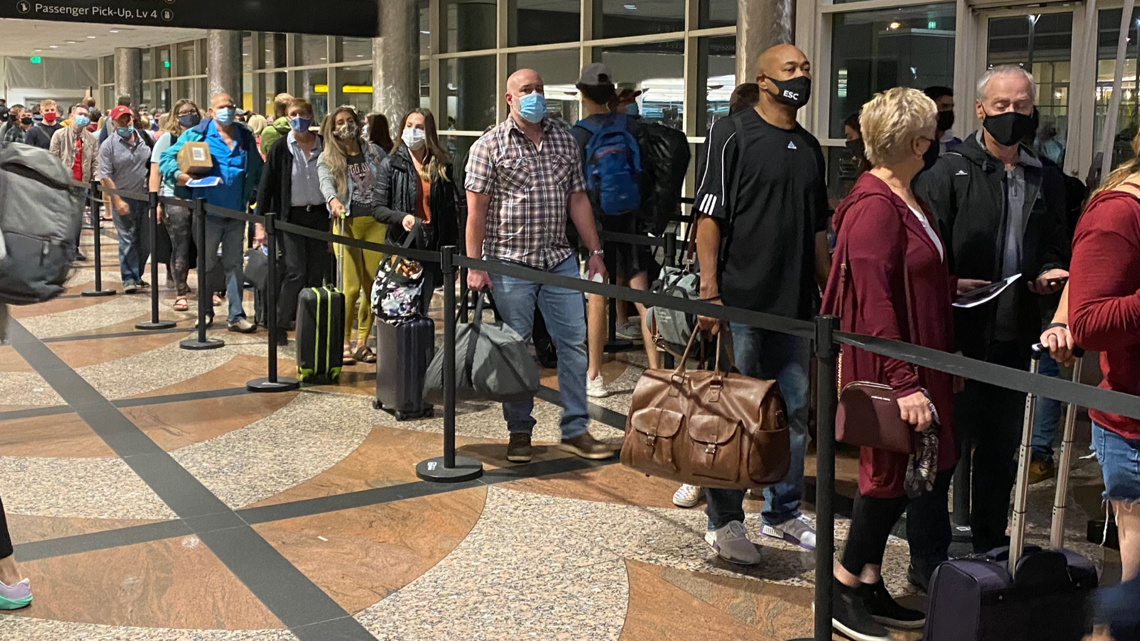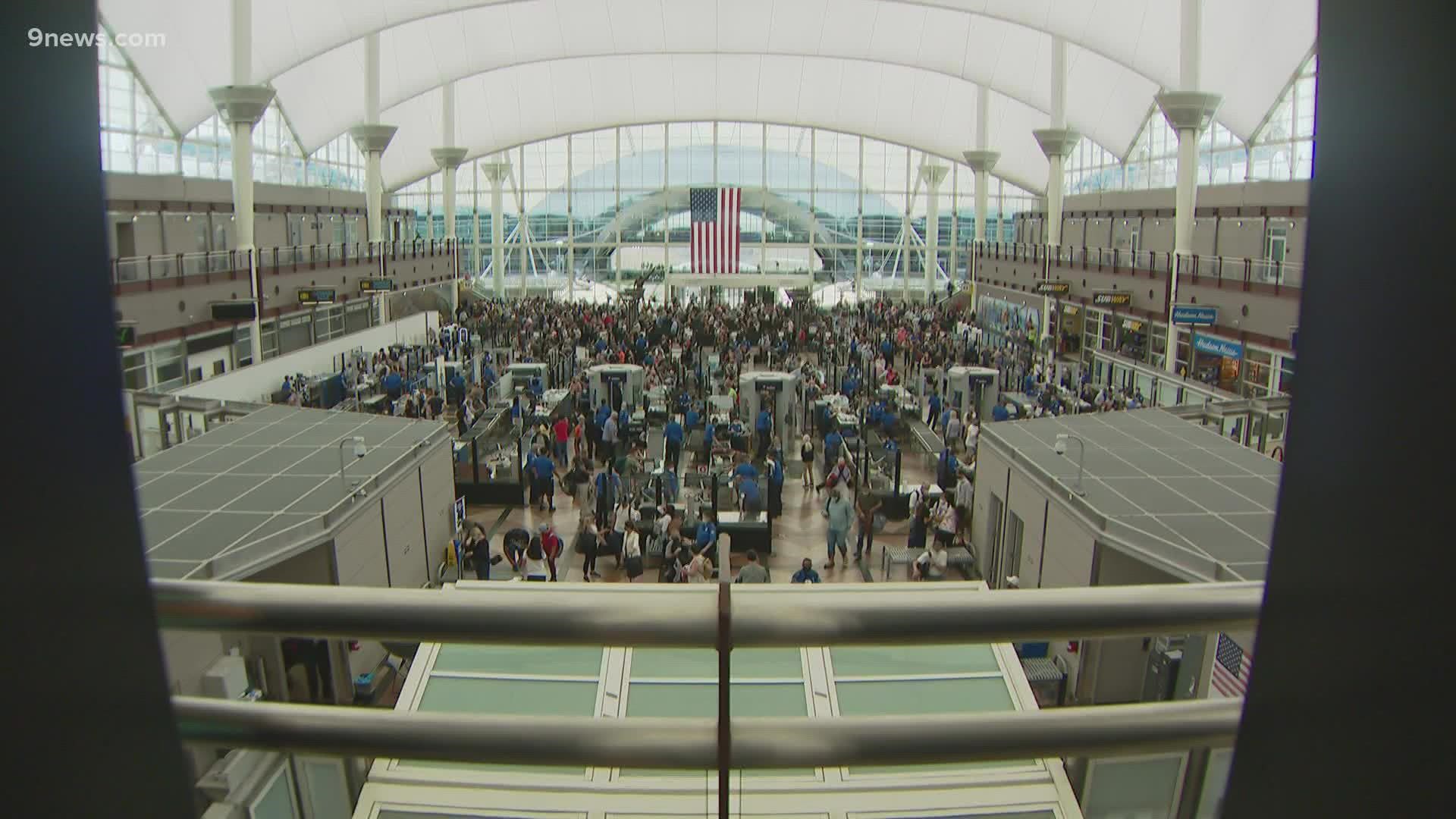DENVER — Have you noticed Denver International Airport in the news lately? The headlines aren’t as flattering as the airport is used to.
Construction has created something of a maze inside the airport’s terminal, with temporary walls blocking major parts of the terminal.
A labor shortage has also created issues all over the airport. A shortage of shuttle drivers caused the airports to close two major long-term parking lots. A shortage of staff at TSA sometimes leads to long security lines.
“What we are worried about is that our passengers have a good experience in the airport anytime that they travel, and it’s no doubt that we are going through a bit of a rough patch and it’s difficult right now,” Stacey Stegman, senior vice president of communications, marketing and customer service for the airport, said.
Stegman said the issues the airport is facing are due in part to how busy things have been. She said since the country began to recover from the pandemic, DIA has been the third busiest airport in the world.
“It’s putting some extra pressure on our facility,” Stegman said.
All of those passengers are experiencing an airport that’s much different than the DIA Denver has become used to.
“I know that we’ve seen the good old days of the airport when everything was grand and gorgeous,” Stegman said. “We didn’t have the passenger traffic that we have today. So we’re having to adapt.”


Stegman said the airport was built to handle 50 million passengers each year. Pre-pandemic in 2019, the airport recorded about 69 million passengers.
Two aviation analysts told 9NEWS that while the changes and construction at the airport may frustrate passengers in the short term, the result is worth it.
“Consumers, including [me], we have the attention span of a rhesus monkey. We go through here now and say it’s terrible. Six months from now, we go through and don’t even remember any of it,” Mike Boyd, a longtime airline industry analyst, said.
“It is hard to get around sometimes,” he said. “Trying to figure out where you are and where you’re going and whatnot. But they’re doing this because in two years we’ll have an airport the rest of the world will be coming to look at.”
Boyd, a self-proclaimed critic of the airport, said the construction is absolutely necessary and is a move many airports can’t make because of limitations on space, or governance issues.
“What’s going on at DIA, in my opinion, is they’re running from obsolescence,” he said. “They’re doing away with things like acres and acres of ticket counter space. When was the last time you saw a ticket?”
“The concept they’re doing is what you have to do to have a world-class airport," he said. "Because what was there before this was increasingly not a world-class airport.”
“Passengers tend to have a short-term memory when it comes to negative events/inconveniences at airports,” Mark Ahasic, an analyst who specializes in airport operations, said.
Ahasic said LaGuardia Airport in New York City is a prime example. That airport had some high-profile negative press during renovations.
“A couple of years later, the inconvenience hasn’t driven fliers away from LGA to other New York and New Jersey airports,” Ahasic said. “LGA is as popular as it’s ever been.”
Stegman said DIA is working to mitigate the issues it can.
“If anyone thinks we are sitting here taking it, they are woefully wrong,” she said.
She pointed to job fairs seeking to hire help for the airport. She said the airport is looking at changing its onboarding process for shuttle bus drivers to open closed parking lots, or open them on a temporary basis based on demand.
“All I can say to people is this is short term," Stegman said. "We’re going to make it better. We’re going to fix the problems we’re experiencing."
In a few weeks, the airport expects to remove the temporary walls housing construction in the Great Hall, which is the more invasive step of the construction process.
“We’re investing. We’re tearing things up. We’re adding capacity so that experience is going to be better,” she said.
SUGGESTED VIDEOS: Full Episodes of Next with Kyle Clark

